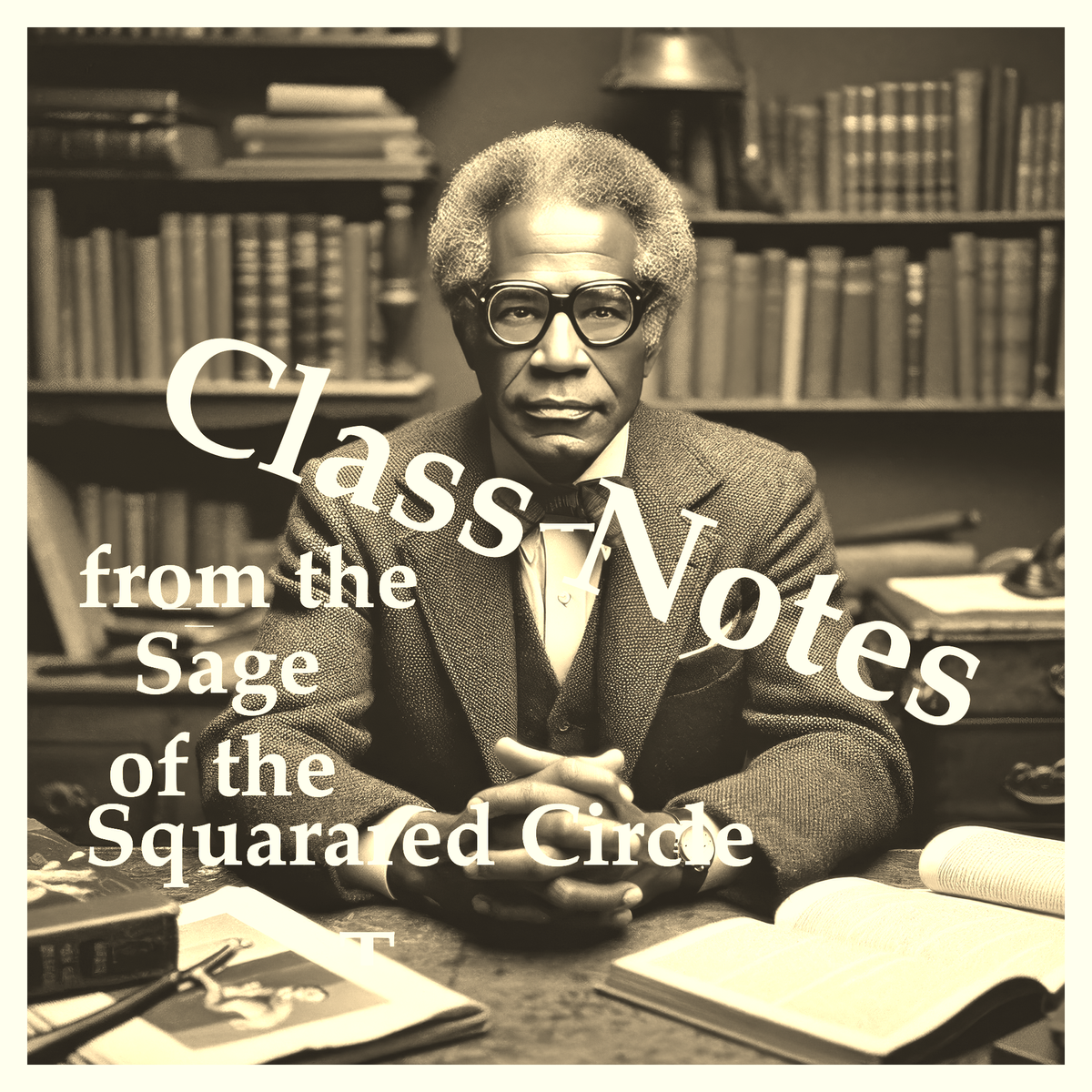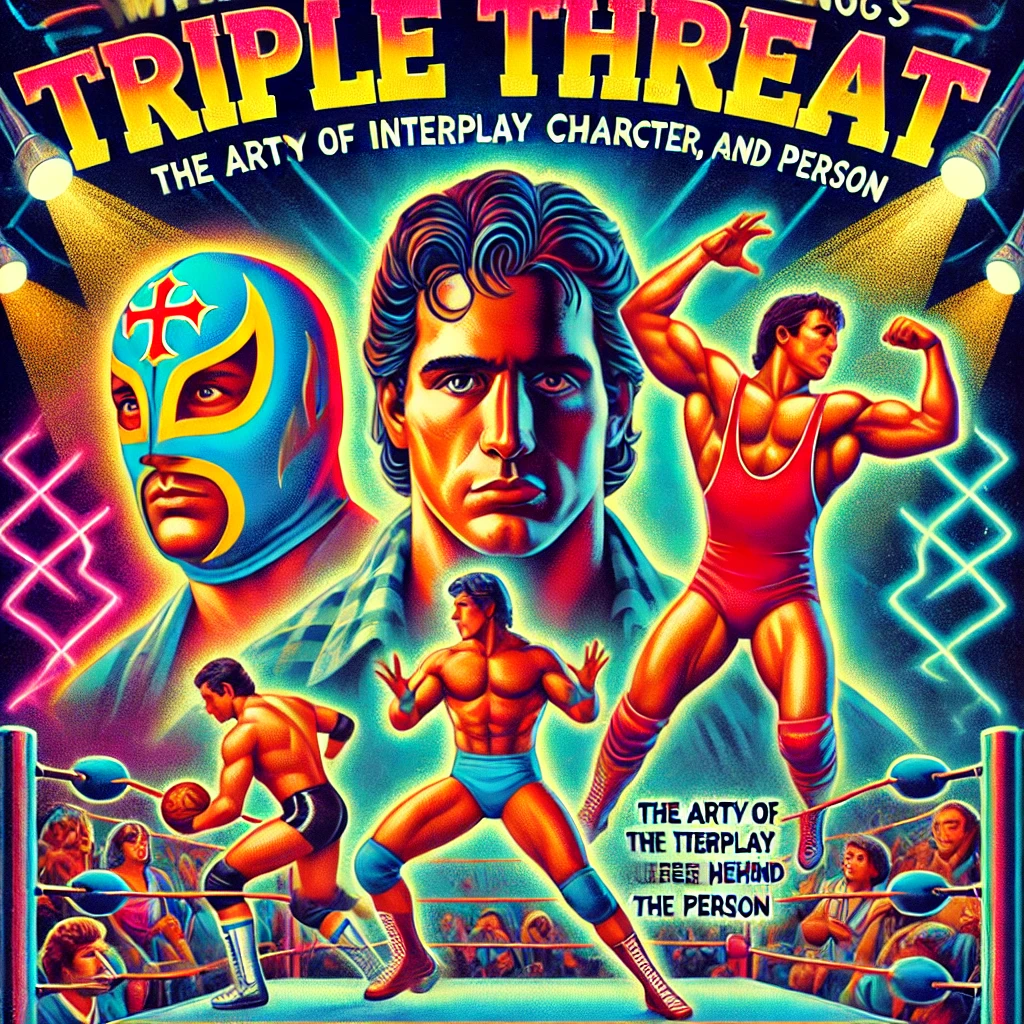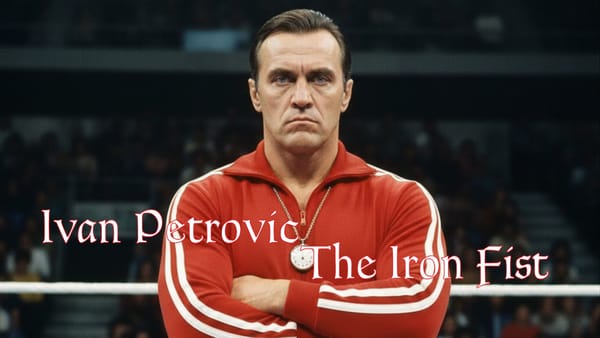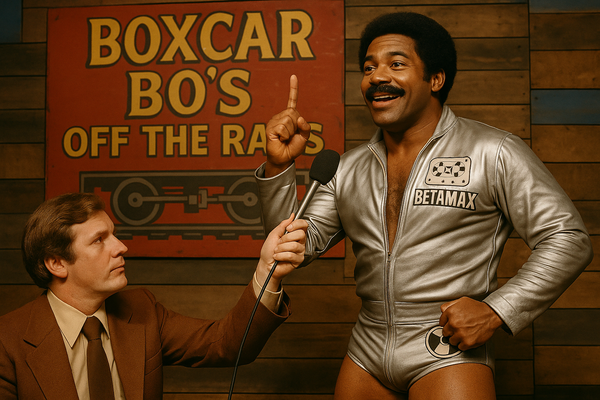Class Notes - Wrestling's Triple Threat
In this edition of "The Professor's Class Notes," explore the intricate dance between character, worker, and person in wrestling, where the lines between performer and performance blur, creating a captivating spectacle that transcends sport.

The Artful Interplay of Character, Worker, and Person
By "The Professor" Harold Langston
In the grand theater of professional wrestling, where the drama of competition meets the storytelling of the stage, each wrestler weaves together three pivotal threads: the character, the worker, and the person. This fascinating tapestry is what transforms wrestling into a unique spectacle, a form of cultural expression that goes beyond mere physical contestation.
The Character: The Mask of the Gladiator
The character is the vibrant facade, the persona each wrestler dons like armor in the ring. This is where legends are born—from the down-to-earth charisma of Eddie Martinez, the "Desert Eagle," to the eerie, otherworldly Doppelgänger. These are more than just roles; they are crafted identities that capture our imaginations and pull us into their world.
The Worker: The Craft Behind the Curtain
Beneath the mask lies the worker, the master craftsman responsible for bringing the character to life through physical prowess and performative skill. Consider "The Technician" Thomas Reed, whose in-ring precision and storytelling ability ensure that each match is not just observed but felt. Or "Harlem Hurricane" James Washington, whose dynamic presence blends athleticism with an almost cinematic flair, making the unreal seem all too real.
The Person: The Heart Beneath the Persona
At the core of this interplay is the person—the real, unmasked human with their own life, experiences, and emotions. This dimension adds a profound depth to the character and authenticity to the worker’s portrayal. Vinny Malone, through his own personal trials and tribulations, crafts characters, like Vicious Vinny and Emerald Protector, that resonate with genuine emotion, his physical sacrifices lending credibility and gravity to his performances.
The Confluence of Three Streams
The interplay among these elements—character, worker, and person—is what makes wrestling an endlessly fascinating spectacle. When real emotions and relationships seep into the narrative, such as the notorious Ides of March Scandal involving Jesse Hawkins and Jack Carson, the line between scripted drama and reality blurs, creating a richer, more compelling narrative. Similarly, Marco Valdez’s journey from personal demons to beloved glory not only inspires but also connects on a personal level, showing how closely art imitates life.
The Audience: The Fourth Pillar
Let us not forget the crucial role of the audience, whose reactions and engagement can steer the course of wrestling’s narratives. They are the final judge of what works and what resonates, their cheers and boos guiding the evolution of characters and perhaps even the fate of the wrestlers themselves. The transformation of Mark Jensen into the rebellious "Mountain Man" was not just creative storytelling but also a response to the visceral reactions of the audience, a testament to the dynamic dialogue between performer and spectator.
In Conclusion: The Dance of Masks and Men

Each edition of professional wrestling is a chapter in an ongoing epic, a dance of masks and men where character, worker, and person blend seamlessly to tell stories of triumph, tragedy, and everything in between. It is this intricate dance that makes professional wrestling not just a sport but a poignant narrative spectacle, reflective of the human condition in all its complexity.
So this Saturday, as you watch the lights dim and the crowd roar to life, remember the triple threat playing out before you. It’s not just wrestling; it’s a narrative ballet, and each move is a word in the story of life. Let's appreciate this unique art form for the deeply immersive cultural experience it offers, enriching our understanding of both the sport and ourselves.
-Prof. Langston
About the columnist
Professor Harold Langston, also celebrated as "The Sage of the Squared Circle," is a distinguished former philosophy professor turned wrestling connoisseur. Known for his signature tweed jacket and scholarly spectacles, he brings the wisdom of the ages into the wrestling arena, dissecting every lock and takedown with philosophical precision. Langston's columns weave together the raw energy of wrestling with profound cultural narratives, making him a beloved intellectual heavyweight among wrestling fans and thinkers alike.





